Black And Decker JS660 Handleiding
Black And Decker
Zaagmachine
JS660
Bekijk gratis de handleiding van Black And Decker JS660 (32 pagina’s), behorend tot de categorie Zaagmachine. Deze gids werd als nuttig beoordeeld door 79 mensen en kreeg gemiddeld 5.0 sterren uit 40 reviews. Heb je een vraag over Black And Decker JS660 of wil je andere gebruikers van dit product iets vragen? Stel een vraag
Pagina 1/32

INSTRUCTION MANUAL
Variable Speed Orbital Jigsaw
Catalog Number
JS660
VEA EL ESPA OL EN LA CONTRAPORTADA.Ñ
INSTRUCTIVO DE OPERACIÓN, CENTROS DE SERVICIO Y PÓLIZA DE GARANTÍA.
ADVERTENCIA: LÉASE ESTE INSTRUCTIVO ANTES DE USAR EL PRODUCTO.
Thank you for choosing Black & Decker!
Go to www.BlackandDecker.com/NewOwner
to register your new product.
PLEASE READ BEFORE RETURNING THIS
PRODUCT FOR ANY REASON:
If you have a question or experience a problem with your Black & Decker purchase, go to
HTTP://WWW.BLACKANDDECKER.COM/INSTANTANSWERS
If you can’t find the answer or do not have access to the internet,
call 1-800-544-6986 from 8 a.m. to 5 p.m. EST Mon. -- Fri. to speak with an agent.
Please have the catalog number available when you call.
for instant answers 24 hours a day.
SAVE ThiS iNSTRuCTiON MANuAL fOR fuTuRE REfERENCE.

General Safety Rules
WARNING: Read all safety warnings and all instructions.
Failure to follow the warnings and instructions may result in electric
shock, fire and/or serious injury.
SAVE ALL WARNINGS AND INSTRUCTIONS FOR FUTURE REFERENCE
The term “power tool” in the warnings refers to your mains-operated
(corded) power tool or battery-operated (cordless) power tool.
1) WORK AREA SAFETY
a) Keep work area clean and well lit. Cluttered or dark areas invite accidents.
b) Do not operate power tools in explosive atmospheres, such as in the
presence of ammable liquids, gases or dust. Power tools create sparks which
may ignite the dust or fumes.
c) Keep children and bystanders away while operating a power tool. Distractions
can cause you to lose control.
2) ELECTRICAL SAFETY
a) Power tool plugs must match the outlet. Never modify the plug in any way. Do
not use any adapter plugs with earthed (grounded) power tools. Unmodified
plugs and matching outlets will reduce risk of electric shock.
b) Avoid body contact with earthed or grounded surfaces such as pipes,
radiators, ranges and refrigerators. There is an increased risk of electric shock if
your body is earthed or grounded.
c) Do not expose power tools to rain or wet conditions. Water entering a power
tool will increase the risk of electric shock.
d) Do not abuse the cord. Never use the cord for carrying, pulling or unplugging
the power tool. Keep cord away from heat, oil, sharp edges or moving parts.
Damaged or entangled cords increase the risk of electric shock.
e) When operating a power tool outdoors, use an extension cord suitable for outdoor
use. Use of a cord suitable for outdoor use reduces the risk of electric shock.
f) If operating a power tool in a damp location is unavoidable, use a ground fault
circuit interrupter (GFCI) protected supply. Use of a GFCI reduces the risk of
electric shock.
3) PERSONAL SAFETY
a) Stay alert, watch what you are doing and use common sense when operating
a power tool. Do not use a power tool while you are tired or under the
inuence of drugs, alcohol or medication. A moment of inattention while
operating power tools may result in serious personal injury.
b) Use personal protective equipment. Always wear eye protection. Protective
equipment such as dust mask, nonskid safety shoes, hard hat, or hearing protection
used for appropriate conditions will reduce personal injuries.
c) Prevent unintentional starting. Ensure the switch is in the off position before
connecting to power source and/ or battery pack, picking up or carrying the
tool. Carrying power tools with your finger on the switch or energizing power tools
that have the switch on invites accidents.
d) Remove any adjusting key or wrench before turning the power tool on. A
wrench or a key left attached to a rotating part of the power tool may result in
personal injury.
2
SAFETY GUIDELINES - DEFINITIONS
It is important for you to read and understand this manual. The information it contains
relates to protecting YOUR SAFETY and PREVENTING PROBLEMS. The symbols
below are used to help you recognize this information.
DANGER: Indicates an imminently hazardous situation which, if not avoided, will
result in death or serious injury.
WARNING: Indicates a potentially hazardous situation which, if not avoided, could
result in death or serious injury.
CAUTION: Indicates a potentially haz ard ous situation which, if not avoided, may
result in minor or mod er ate injury.
NOTICE: Used without the safety alert symbol indicates potentially hazardous
situation which, if not avoided, may result in property damage.

3
e) Do not overreach. Keep proper footing and balance at all times. This enables
better control of the power tool in unexpected situations.
f) Dress properly. Do not wear loose clothing or jewelry. Keep your hair, clothing
and gloves away from moving parts. Loose clothes, jewelry or long hair can be
caught in moving parts.
g) If devices are provided for the connection of dust extraction and collection
facilities, ensure these are connected and properly used. Use of dust collection
can reduce dust-related hazards.
4) POWER TOOL USE AND CARE
a) Do not force the power tool. Use the correct power tool for your application. The
correct power tool will do the job better and safer at the rate for which it was designed.
b) Do not use the power tool if the switch does not turn it on and off. Any power
tool that cannot be controlled with the switch is dangerous and must be repaired.
c) Disconnect the plug from the power source and/or the battery pack from the
power tool before making any adjustments, changing accessories, or storing
power tools. Such preventive safety measures reduce the risk of starting the power
tool accidentally.
d) Store idle power tools out of the reach of children and do not allow persons
unfamiliar with the power tool or these instructions to operate the power tool.
Power tools are dangerous in the hands of untrained users.
e) Maintain power tools. Check for misalignment or binding of moving parts,
breakage of parts and any other condition that may affect the power tool’s
operation. If damaged, have the power tool repaired before use. Many
accidents are caused by poorly maintained power tools.
f) Keep cutting tools sharp and clean. Properly maintained cutting tools with sharp
cutting edges are less likely to bind and are easier to control.
g) Use the power tool, accessories and tool bits, etc. in accordance with these
instructions, taking into account the working conditions and the work to be
performed. Use of the power tool for operations different from those intended could
result in a hazardous situation.
5) SERVICE
a) Have your power tool serviced by a qualied repair person using only identical
replacement parts. This will ensure that the safety of the power tool is maintained.
SPECIFIC SAFETY RULES
• Hold power tool by insulated gripping surfaces, when performing an operation
where the cutting accessory may contact hidden wiring or its own cord. Cutting
accessory contacting a “live” wire may make exposed metal parts of the power tool
“live” and could give the operator an electric shock.
• Use clamps or another practical way to secure and support the workpiece to a
stable platform. Holding the work by hand or against your body leaves it unstable
and may lead to loss of control.
•Keep hands away from cutting area. Never reach underneath the material for any
reason. Hold front of saw by grasping the contoured gripping area. Do not insert fingers or
thumb into the vicinity of the reciprocating blade and blade clamp. Do not stabilize the saw
by gripping the shoe.
• Keep blades sharp. Dull blades may cause the saw to swerve or stall under pressure.
• When cutting pipe or conduit ensure that they are free from water, electrical wiring, etc.
•Allow the motor to come to a complete stop before withdrawing the blade from the
kerf (the slot created by cutting). A moving blade may impact the workpiece causing a
broken blade, workpiece damage or loss of control and possible personal injury.
•Never hold work in your hand, lap or against parts of your body when sawing. The
saw may slip and the blade could contact the body causing injury.
• Keep handles dry, clean, free from oil and grease. This will enable better control of the tool.
•Clean out your tool often, especially after heavy use. Dust and grit containing metal
particles often accumulate on interior surfaces and could create an electric shock hazard.
•Do not operate this tool for long periods of time. Vibration caused by the operating
action of this tool may cause permanent injury to fingers, hands, and arms. Use gloves to
provide extra cushion, take frequent rest periods, and limit daily time of use.
Product specificaties
| Merk: | Black And Decker |
| Categorie: | Zaagmachine |
| Model: | JS660 |
Heb je hulp nodig?
Als je hulp nodig hebt met Black And Decker JS660 stel dan hieronder een vraag en andere gebruikers zullen je antwoorden
Handleiding Zaagmachine Black And Decker

26 Augustus 2024

26 Augustus 2024

28 Juni 2024

17 Augustus 2023

6 Juli 2023

18 Juni 2023

17 Juni 2023

16 Juni 2023

12 Juni 2023

11 Juni 2023
Handleiding Zaagmachine
- Hyundai
- Hobart
- Powerfix
- BGU
- Plantiflor
- Toolcraft
- Morrison
- Metabo
- Royal Catering
- Atika
- Total
- Backyard Pro
- Budget
- Cocraft
- Exakt
Nieuwste handleidingen voor Zaagmachine
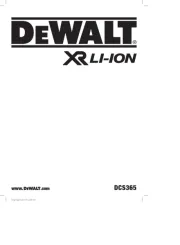
3 Augustus 2025
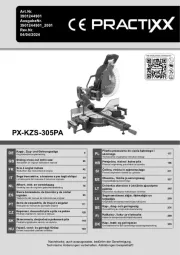
30 Juli 2025
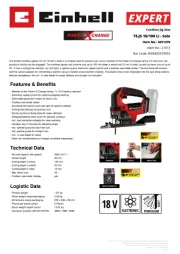
29 Juli 2025
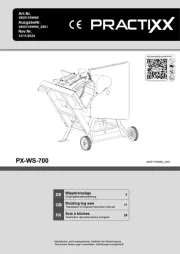
29 Juli 2025
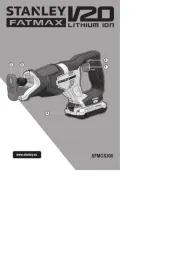
29 Juli 2025
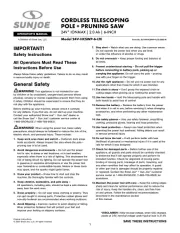
29 Juli 2025
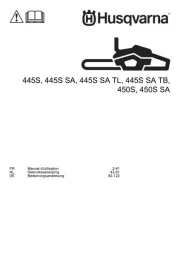
28 Juli 2025
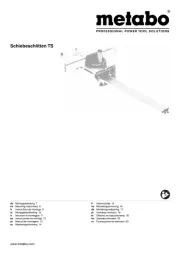
23 Juli 2025
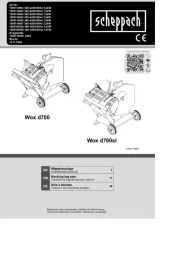
21 Juli 2025
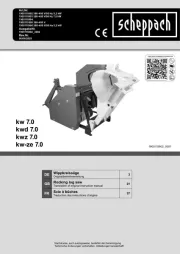
21 Juli 2025